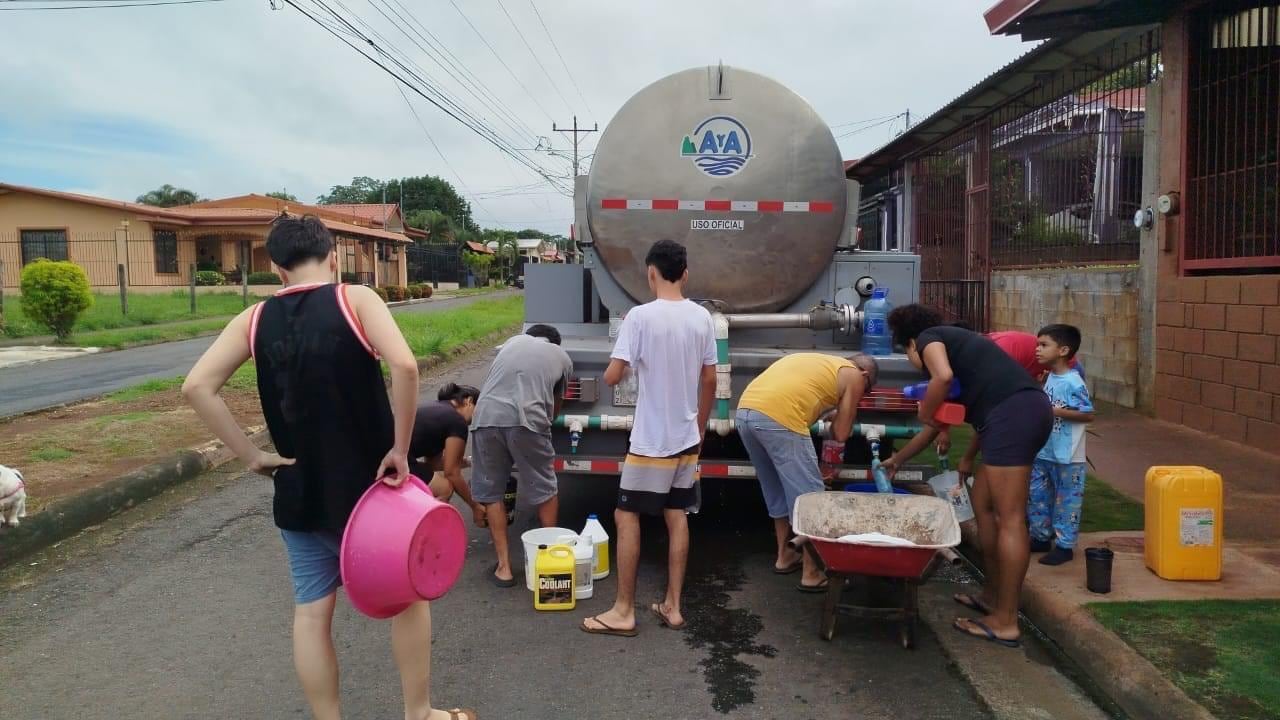
[ad_1]
There are two types of purification sources. Groundwater emerges as springs and is captured at the point of emergence to prevent it from flowing over the land surface and becoming polluted. Surface water is water that flows through the open air on the land surface as a product of rain and outcrops before becoming rivers, lakes, lagoons, reservoirs, estuaries and seawater.
Groundwater, in its own right, is not susceptible to pollution and is a safe source of water if properly protected. Surface water is exposed to runoff that carries a variety of pollutants. These are our rivers, lakes and salty waters of the ocean or coastal areas. Therefore, river intakes are located at the highest point of the watershed, as this is where there is less anthropogenic activity.
Many of the most important surface intakes generate the highest flows, supplying about 50% of the system, such as the upper basin of the Virilla River, its tributaries and other urban areas such as Puntarenas (Barranca River Basin), Limon (Limon River Basin), Banano River) and Liberia (Liberia River Basin).
The problem is that these intakes were built many years ago when these areas were wooded, pasture-rich, and had little agricultural activity. This is Coronado, the site of the first intake for the Guadalupe water treatment plant in the 1950s. At the time, Costa Rica had 1 million inhabitants. Today, we have more than 5,200,000. In the early 1960s, Coronado had 10,600 inhabitants, and by 2023, the number of inhabitants reached 73,500.
Population growth brings with it a large number of pollution-generating anthropogenic activities, first and foremost the lack of domestic sewage systems and wastewater treatment plants, which could return this pollution to the environment with “minimal” impact.
Today’s pollutants include, in addition to feces, substances from pharmaceuticals such as hormones, cytostatics and antibiotics, or beauty and personal hygiene products; there are also others used for agricultural purposes, such as herbicides (which have recently caused an emergency in the Barranca River Basin) or hydrocarbons, such as those found in Turrialba and Guadalupe.
Although some contaminants are listed in the standards, most are not covered by quality control programs. Likewise, water treatment plants do not use the necessary technologies to eliminate or reduce them until the risk of disease is minimized. Due to the lack of sanitary monitoring management in watersheds with purified water intakes and the lack of monitoring, the water in these systems is increasingly vulnerable to contamination, and contamination incidents have been repeated in recent months.
According to the 2023 State of the Nation Report, drinking water coverage fell from 97.5% to 89.9% from 2022 to 2023, but rural or Asadas Aqueduct fell by 14%. The index is expected to collapse significantly in 2024.
For source contamination incidents, we have to increase rationing because negative pressure is created in an empty network, “sucking” contaminants in, especially in old or poorly maintained pipes. Through these system breaks, leaks occur when pipes are full, and dirty water enters when they are empty. People are forced to store water, in some cases in open tanks, with the risk of contamination when the water is taken out.
While the phrase “water is health and development” was indeed coined many years ago, today poor management threatens health and slows development. “Governments and society must take water seriously.”
The author is a chemist and president of Acasa.

[ad_2]
Source link


